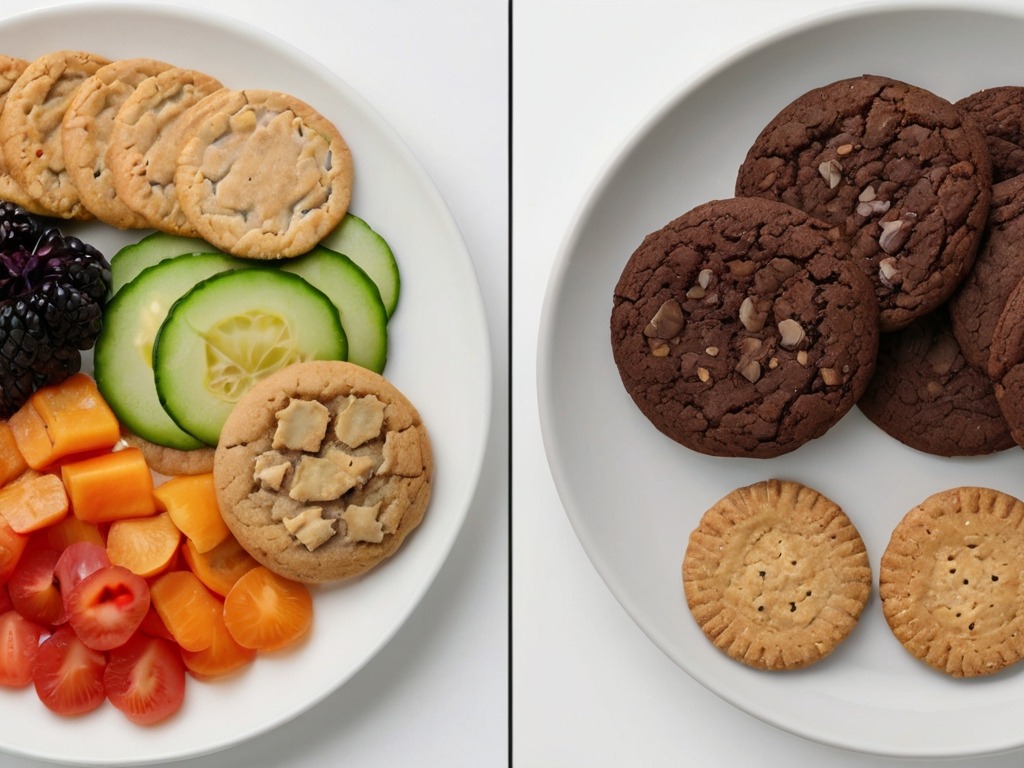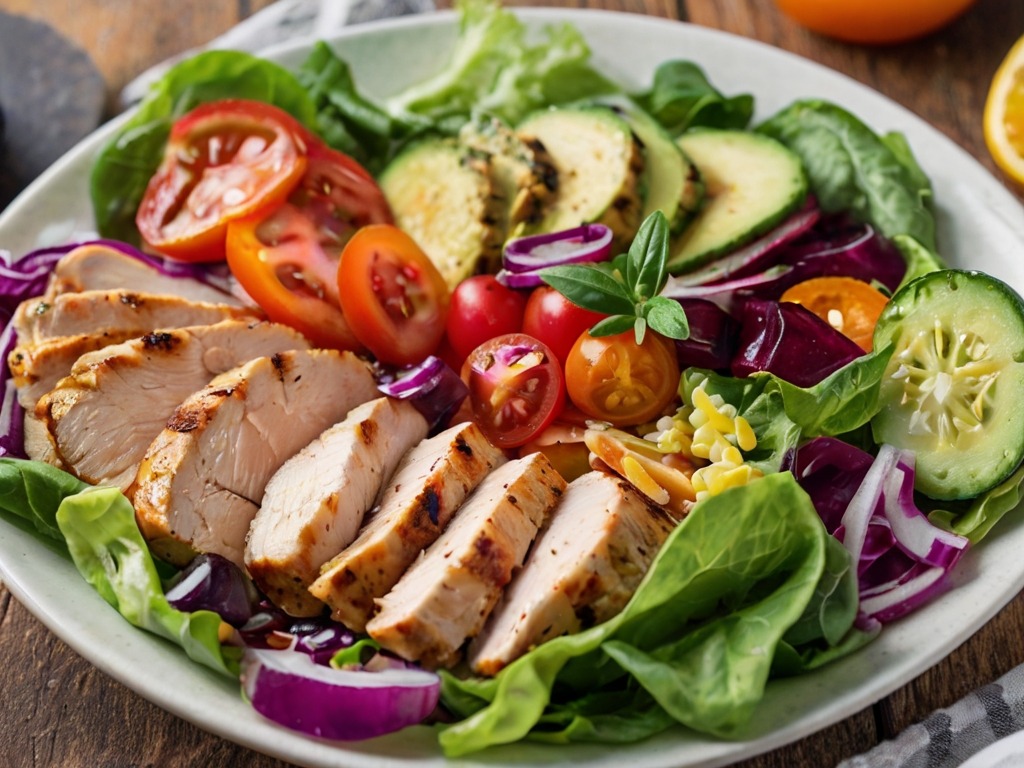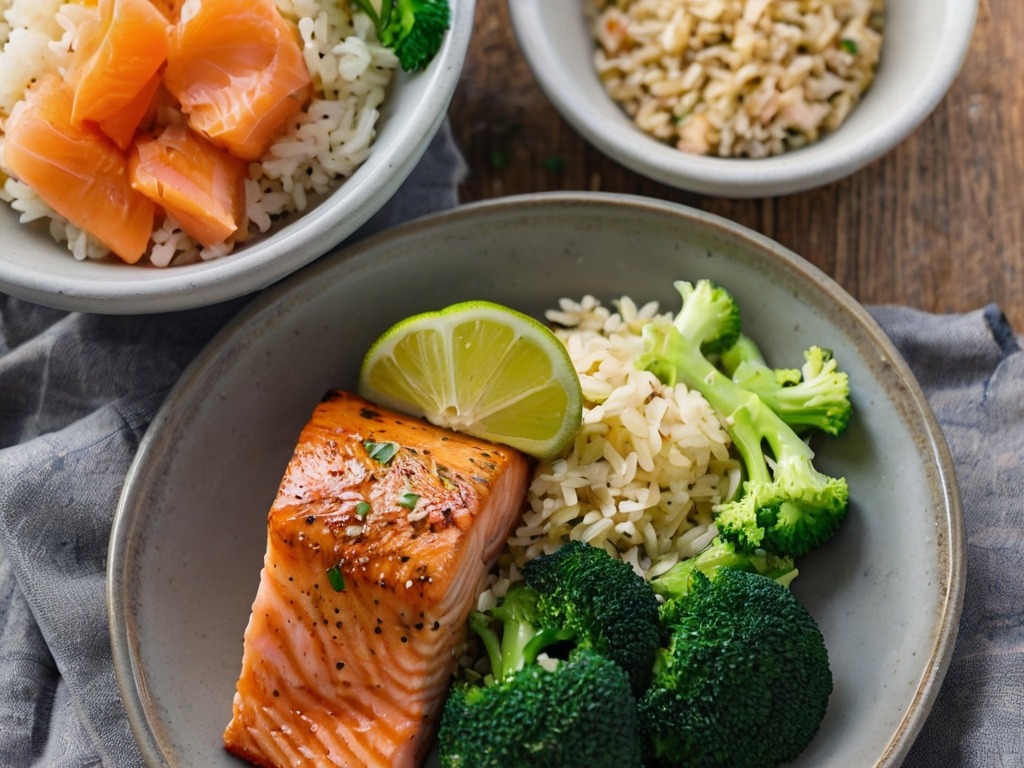Feeling Full and Losing Weight: Top Nutrition Filled Foods for Weight Loss and Overall Health in 2025
Have you ever felt frustrated with weight loss plans that leave you constantly feeling hungry? It might seem like a cruel trick: eat less, feel hungry, lose weight. But what if there was a way to feel full and satisfied while still achieving your weight loss goals? Enter the concept of energy density.

Energy density refers to the number of calories packed into a specific amount of food. High energy density means a small portion size holds a lot of calories, while low energy density means a larger portion size contains fewer calories. The key to weight loss with energy density is focusing on low-energy-dense foods. These foods fill you up without overloading you on calories, helping you feel satisfied and manage hunger.
Why Low-Energy-Density Foods Work
Let’s take raisins and grapes as an example. One cup of raisins, a high energy-density food, packs a whopping 480 calories. In contrast, a cup of grapes, a low energy-density food, contains only about 104 calories. Imagine the difference in volume! You’d need to eat a much larger portion of grapes to reach the same calorie intake as the raisins. This allows you to feel full on fewer calories.
Three factors significantly influence a food’s energy density:
- Water: Fruits and vegetables are champions of low energy density. They boast high water and fiber content, providing volume and weight without significant calories. Think grapefruit (90% water) with just 64 calories per half fruit, or a medium carrot (88% water) with only about 25 calories.
- Fiber: High-fiber foods are your friends for weight loss. They not only add volume but also take longer to digest, keeping you feeling fuller for longer on fewer calories. Vegetables, fruits, and whole grains are all excellent sources of fiber. Popcorn, a high-volume, low-calorie whole grain, is a prime example – one cup of air-popped popcorn has about 30 calories.
- Fat: Fat is the king of energy density. A single pat of butter holds nearly the same number of calories as two cups of raw broccoli! Foods naturally high in fat, like some meats, or those with added fats, tend to be higher in calories than their leaner counterparts.

Building a Low-Energy-Dense Eating Plan
While adopting any new lifestyle habit takes commitment, creating an eating plan based on energy density is achievable. Here’s a breakdown of food groups within the Mayo Clinic Healthy Weight Pyramid, highlighting low-energy-dense choices:
- Vegetables: Most vegetables are calorie superstars, offering high volume and low energy density. They’re packed with water and fiber, filling you up without the calorie burden. Examples include salad greens, asparagus, carrots, tomatoes, broccoli, and zucchini.
Tips to Increase Vegetable Intake:
- Top pasta dishes with sauteed vegetables instead of meat sauce.
- Increase vegetable portions on your plate and decrease meat portions.
- Add chopped vegetables to sandwiches.
- Snack on raw vegetables with dips like hummus.
- Fruits: While most fruits are healthy additions to your diet, some are lower in calories than others. Choose whole, fresh, frozen, or canned fruits without added syrup. Fruit juices and dried fruits, though natural, are concentrated sources of sugar, making them high in energy density. They offer fewer calories for their volume and don’t keep you feeling full as long.

Tips to Increase Fruit Intake:
- Add berries to your morning cereal.
- Enjoy mango or peach slices on whole-wheat toast with a touch of peanut butter.
- Toss mandarin oranges and peaches into a salad.
- Keep a bowl of fresh fruit readily available for easy snacking.
- Carbohydrates: Many carbohydrates are grains or grain-based products like cereals, rice, bread, and pasta. Whole grains are the clear winners here, boasting higher fiber content and essential nutrients.
Tips to Choose Healthy Carbohydrates:
- Opt for whole-wheat bread, pasta, and cereals over refined grain options made with white flour or added sugar.
- Include oatmeal, brown rice, and whole-grain cereals in your diet.
- Be mindful of portion sizes, as many carbohydrates are higher in energy density.

- Protein and Dairy: Look for protein sources from both plants and animals. The healthiest low-energy-dense choices are those high in protein but low in fat and calories. These include:
- Beans, peas, and lentils (also excellent fiber sources)
- Fish
- Lean meat and poultry
- Low-fat or fat-free dairy products (milk, yogurt, cheese)
- Egg whites
- Fats: While all fats are high in energy density, some are healthier than others. Aim to include small amounts of healthy monounsaturated and polyunsaturated fats in your diet. These fats are found in nuts, seeds, and oils like olive, flax seed, and safflower. Limit saturated and trans fats, such as those found in butter and shortening.
- Sweets: Sweets are typically high in energy density. However, there are healthy options that are lower in added fat and contain wholesome ingredients like fruits, whole grains, and low-fat dairy. Examples include fresh fruit with low-fat yogurt, cookies made with whole-wheat flour, or a small piece of dark chocolate.
The key with sweets is moderation and ingredient quality. Even a small portion of dark chocolate can be incorporated into a weight loss plan.
How To Eat To Make Yourself Healthy in 2025
Making Energy Density Work for You
By following the principles of energy density, you don’t have to feel deprived or constantly hungry. Filling your diet with plenty of fresh fruits, vegetables, and whole grains allows you to feel full on fewer calories. This approach even leaves room for occasional treats without jeopardizing your weight loss goals. Here are some additional takeaways:

- Focus on variety: Don’t limit yourself to a few low-energy-dense foods. Explore a wide range of options within each food group to keep your meals interesting and satisfying.
- Read food labels: Pay attention to serving sizes and calorie counts, especially for processed foods that may be deceptively high in energy density.
- Plan your meals and snacks: Having healthy options readily available helps you avoid unhealthy choices when hunger strikes.
- Don’t skip meals: Skipping meals can lead to overeating later. Aim for regular meals and snacks throughout the day to keep your metabolism going and prevent hunger pangs.
- Drink plenty of water: Water helps you feel full and can sometimes be mistaken for hunger. Staying hydrated is crucial for overall health and weight management.
- Combine low-energy-dense foods with lean protein: This pairing helps you feel full and satisfied for longer, keeping you on track with your weight loss goals.
Remember, weight loss is a journey, not a destination. By incorporating the concept of energy density into your eating plan, you can create a sustainable approach to weight management that leaves you feeling full, satisfied, and empowered to reach your goals.
